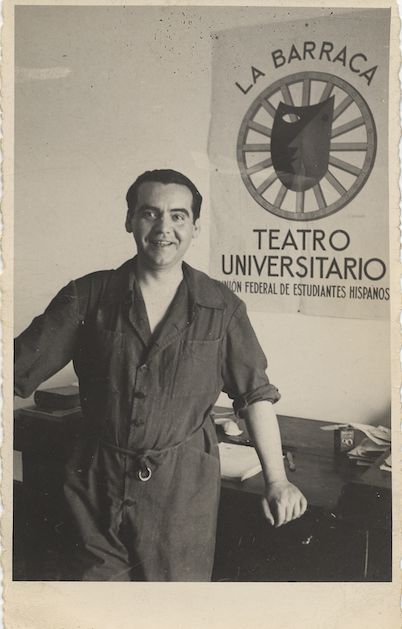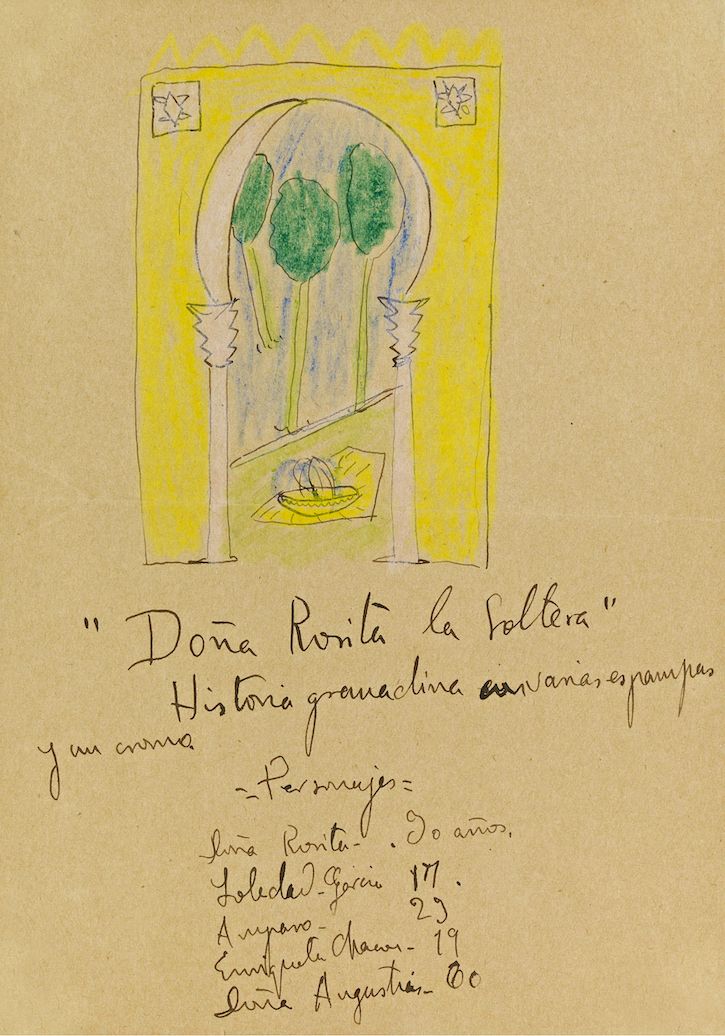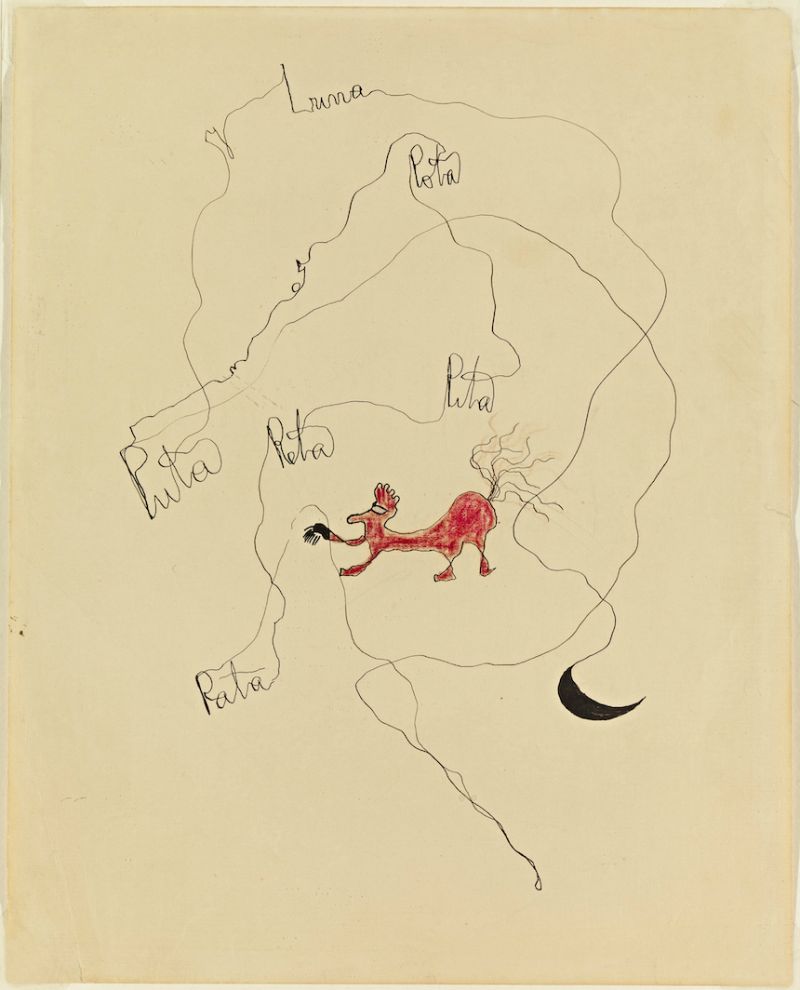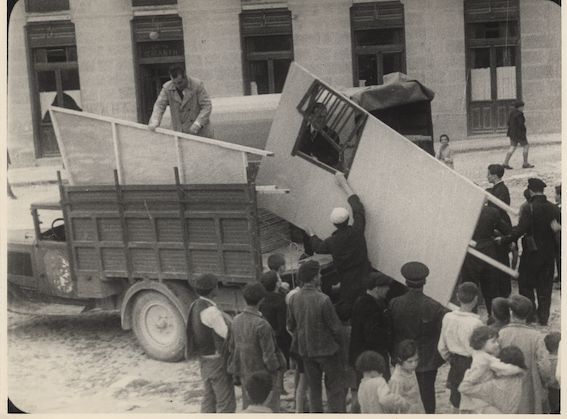Exposition Federico García Lorca en scène
Introduction
Born in 1898 in Fuente Vaqueros, in Andalusia, Federico García Lorca was a major poet. But beyond the poet, a number of other Lorcas exist. There was the artist-draftsman, the inspired musician, and the man of the theater, a playwright, actor, and director. Lorca’s body of work is stamped by many popular traditions as well as a visionary avant-gardism. It exceeds any simple chronological reading and offers a corpus as singular and contrasting as Blood Weddingand Play Without a Title, The House of Bernarda Alba and The Public, Yerma and When Five Years Pass, Gypsy Ballads and Poet in New York…

Federico García Lorca devant une affiche de La Barraca, dans sa chambre de la Huerta de San Vicente, été 1932 © Herederos de Federico García Lorca
A successful author from the start of his career, Lorca embodied a radical freedom that was provocative as well, probably without his wanting it to be. He defended with complete conviction and a deep love of the theater the idea that culture has the power to change society. Innovative and revolutionary, his theater transformed the stage into a free forum that gave rise to truths, emotions, and sentiments that thoroughly shook up the mindset in Spain in the 1930s. Assassinated by the fascists in August of 1936 at the start of the Spanish Civil War, Lorca figures among those fleeting lives, those shooting stars whose dazzling brilliance leaves a lasting impression. That bright light has allowed the poet’s words to reach us through a range of languages and cultures, touching us still with their miraculously contemporary resonance.
Five great themes run through Lorca’s work for the stage, i.e., love, the passionate quest for the other, and its corollary disenchantment; the solitude his characters irredeemably fall into; masks and the protection of hypocrisy; theater as a great metaphor for falsehood; and finally death, in its intense contrast with life.

Manuscrit de Doña Rosita la soltera, 1922 © Herederos de Federico García Lorca

Puta y Luna, encre de Chine et crayon de couleur sur papier, 1929-1931 © Herederos de Federico García Lorca
The exhibition Federico García Lorca en scène – Frederico García Lorca on stage – explores these themes in Lorca’s writing for the theater and goes over the history of the plays’ successes and failures through a selection of archival materials, including manuscripts, first editions, posters, programs, drawings, costumes, sets, films and photos. These vestiges of a life made up of real voyages and inner journeys, suffused with poetry and overflowing with generosity, are an attempt to grasp the music, colors and sensibility of Lorca, to grasp the ungraspable: genius.

Montage de la scène du théâtre ambulant La Barraca, Almazan, juillet 1932 © Herederos de Federico García Lorca
Curators
Frederic Amat and Lluís Pasqual
Partnership
with the Fundación Federico García Lorca
Programme
Visites commentées de l'exposition
Samedi 10 juin à 14h30
Mercredi 6 septembre à 17h
Atelier de vacances pour les enfants
Trois après-midis d’atelier pour découvrir l’univers théâtral de Federico García Lorca et pour créer un spectacle original de marionnettes, en compagnie d’étudiants de l’école des Teintureries de Lausanne.
Mardi 15, mercredi 16 et jeudi 17 août de 14h à 16h


